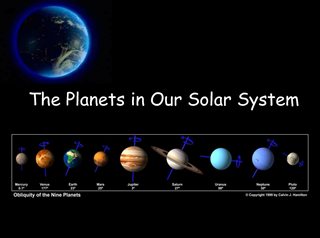Playing is Learning
The Planets of Our Solar System
December 7th, 2014
| Ads | ||
|
Play the Challenge
|
||
|
A New Word is Coined A new Character is revealed A new Game is Afoot |
An Edutainment Adventure Based on Three Rounds of Investigations
|
|
|
Welcome to the World of PROFESsee™by seeCOSM™ PROFESsee™ is my title. I am the perpetual learner, in pursuit of knowledge, wisdom and truth. I derived my name from professor |
 |
|
|
Nine planets? Nine only? No, you are wrong. Last time we checked, we were sure that there is a planet, perhaps, two, three or even ten, or even more for every person on the earth. If you are the kind of person who sometimes wishes they could get their own planet, there is one for you out there, and habitable too! The planets are one of the components of the enormous solar system. Astronomers have documented at least nine (recently eight after it was decided that Pluto didn’t meet the criteria) planets. Recent discoveries made show that there may be a tenth planet or even some more. The main planets are Mercury, Venus, Earth, Mars, Jupiter, Saturn, Uranus, Neptune and lastly Pluto. Depending on the composition of the materials that make them, they are classified into two broad categories. To begin with, the first four are referred to as terrestrial planets, the second bunch in the exception of Pluto, are known as gas giants. Pluto has an ice-like surface and hence does not conform to the two groupings and is referred to as the dwarf planet. Jupiter is the largest among them and the smallest is Pluto. Saturn has a lovely ring around it that makes it to stand out in satellite images. The planets revolve around the sun along the orbits. The time each take to complete one revolution depends solely on its position from the sun. They also rotate around their own axes. Some like Venus take 243 Earth days to complete one cycle. Temperatures in these planets vary with their relative distances from the sun. Therefore, the farthest becomes the coolest such as Pluto. Each planet has a moon with some having a number of them. The diameters of the planets vary with the size and shape of a particular planet. Jupiter has the largest circumference. It is not proved yet but experts in astronomy have pointed out that there might be yet another planetary body orbiting near Pluto. Image courtesy of: http://www.docstoc.com/docs/121946616/The-Planets-in-Our-Solar-System---PowerPoint |
||
Latest News / Events
E-mail [email protected]
The Professee™ Newsletter Beta
http://www.seecosm.com/
http://www.seecosm.com/

